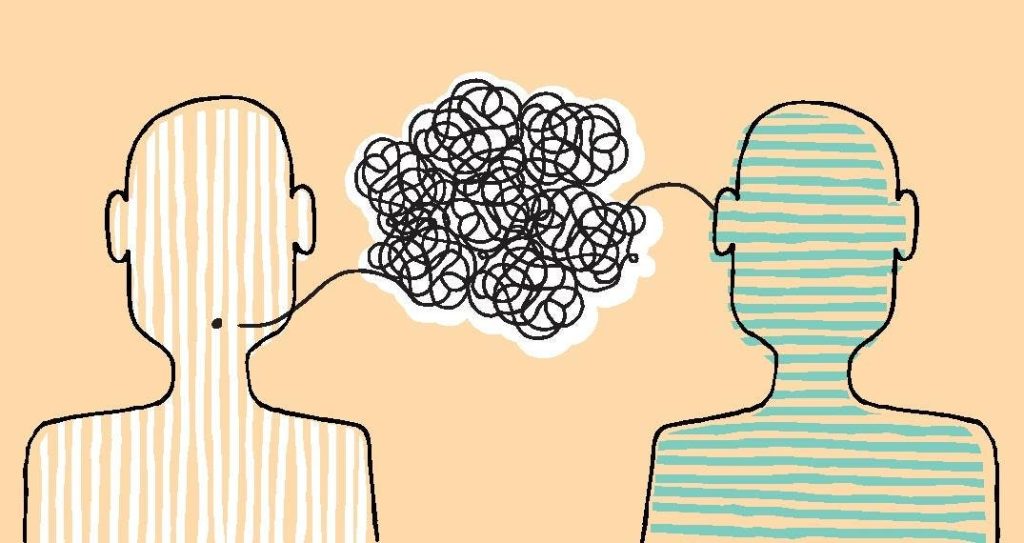One of the most knowledgeable financial advisors I’ve ever observed had one of the worst communication tendencies one could have in such a role: He constantly interrupted when clients were talking.
But it was worse than you think. Although I’m fairly sure it was subconscious, it was almost as though he was gamifying client communication—seeing how quickly he could diagnose the dilemma with the least amount of information, and then deliver a show-stopping recommendation.
Before we revel too much in self-righteous indignation, we must acknowledge something: We do it, too. I do it. You do it. We all do it, at least occasionally, but to better understand what’s happening from a neurological perspective during conversation, we can develop an unfair advantage in human communication by learning how to truly listen.
But first, what’s actually happening in our brains when we’re listening?
What’s happening in the brain when we’re listening?
More than you likely imagine:
- Auditory Processing – The auditory cortex in the temporal lobe of our brains processes sound waves as the brain begins decoding the speech into words and sentences.
- Language Comprehension – The Wernicke’s area in the cerebral cortex then engages in understanding the meaning of the words and sentences.
- Mentalizing – Several other areas of the brain are likely involved during and after auditory processing and language comprehension as we translate sounds into beliefs, desires, and intentions, also referred to as “Theory of Mind” processing.
- Prediction – Based on what we’re hearing and feeling, the brain begins to anticipate and predict what the speaker will say next, activating the prefrontal cortex and the cerebellum. (Do you ever finish someone’s sentence?)
- Emotional Processing – The amygdala and insula engage to help us understand the emotional messaging of the speaker and begin developing an emotional response.
- Memory Formation – Finally, the brain encodes the information processed, comprehended, and felt into memories through the activation of the hippocampus.
The process of listening has the brain firing all over the place, and it’s important to note that it’s not necessarily a linear process. So, how can we train ourselves to listen better?
How can we truly listen?
- Don’t react, respond – Numerous studies suggest that humans wait only 200 milliseconds—that’s 0.2 seconds—before sending a conversational volley back at the speaker. This isn’t really a response, but more of a reaction. Therefore, by simply slowing the process down, we allow more processing time and signal to the speaker that we’re truly listening, rather than thinking about our next point. And yes, if you need help remembering this discipline, this advice is also the subject of a new Pearl Jam song.
- Listen actively – You’ve heard of active listening, but do you know what it looks and sounds like? It’s nodding along, following with gutturals (like “Hmm,” “Oh,” and “U-huh”), mirroring posture, and most importantly, maintaining eye contact.
- Reflect – You’ll help yourself—and the person you’re listening to—if you reflect back to them what you’ve heard them say. “Simple reflection” is a mere parroting back what you’ve heard (“If I’ve heard you correctly…”) while “strategic reflection” involves summarizing and paraphrasing (“So you’re saying…”). Dr. Ted Klontz, a psychotherapist specializing in financial advisory communication, says, “You can’t believe what you think you’ve heard.” And you’ll be shocked how often the simplest forms of reflection result in correction.
- Clarify – After confirming the accuracy of what you’ve heard, clarify further by asking questions. Too often, we launch into a soliloquy worthy of an Oscar only to learn that we didn’t even understand the comment or question. Clarifying questions are conversational insurance policies.
- Don’t hijack the conversation – “Oh, I loved that book, too—I learned about it on Huberman’s podcast and ended up changing my entire morning routine and…and…and…” is great for cocktail parties and family gatherings. Yet, despite what might be a well-intentioned desire to connect with someone on a shared interest, when we grab the microphone from the speaker, we’re actually hijacking the conversation and unintentionally communicating that we’re more important than them.
- Manage your emotions – As we listen, we’re not only receiving physical and emotional signals from the speaker, but also producing emotional responses that can subvert our listening. By applying each of the above, we can discipline ourselves to delay our emotional response, and hopefully also avoid an impulsive and embarrassing reaction.
- Never, never, never interrupt – Ever.
Truly listening is a game-changing advantage for financial advisors (and their clients), especially because those with the quantitative capacity required in the practice of personal finance are often less skilled in the qualitative arts, and because many advisors have put way too much stock in the advice part of advising. But mastering this skill can give all of us an advantage in any communication—whether with clients, colleagues, friends, or family members.
Read the full article here










